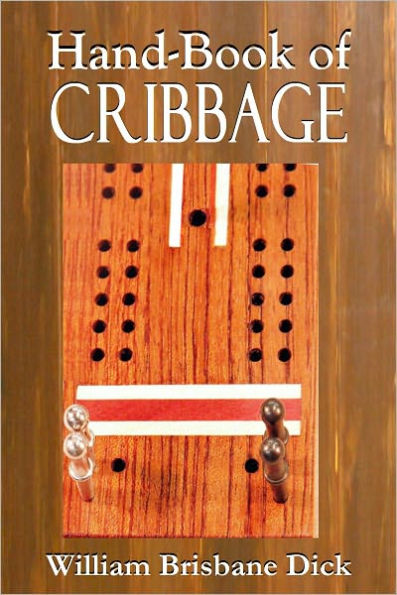Scanned, proofed and corrected from the original hardcover edition for your reading pleasure. (Worth every penny!)
***
An excerpt from the beginning of the first chapter:
SIX-CARD CRIBBAGE.
Six-Card Cribbage is much more popular in this country than any of the other Cribbage games; and should, therefore, be first considered.
DEALING.
The players having cut for deal the pack is shuffled, and the non-dealer cuts it. The dealer re-unites the packets and gives six cards to each player, by one at a time, commencing with his adversary. The undealt portion of the pack is placed face downwards, between the game-hole end of the board and the edge of the table.
LAYING OUT FOR CRIB.
The deal being completed, the players proceed to look at their hands and to lay out for crib. Each has to put out two cards. The players, having decided which two cards they deem it expedient to discard, place the discarded cards face downwards on the table, by the side of the board nearest to the dealer. The two cards last put out are placed on the top of the two first put out.
The four cards laid out are called the crib.
CUTTING FOR THE START.
After the crib is laid out, the non-dealer cuts the pack and the dealer turns up the top card of the packet left by his adversary. The card turned up is called the start.
The packets of the cut are now re-united, and the dealer places the start face upwards upon the pack.
If the start is a Knave the dealer marks two (called two for his heels).
PLAYING.
The hands are now played in the following manner:—The non-dealer plays any card from his hand he thinks fit, placing it face upwards on the table by the side of the board nearest to himself, and calls out the number at which it is valued.
The King, Queen, Knave, and Ten (called Tenth cards) are valued at ten each, the other cards at the number of pips on them.
The dealer then plays any card he thinks fit, placing it face upwards by his side of the board, and calls out the value' of his card added to the value of the card first played.
The non-dealer next plays another card, and then the dealer, and so on, as long as any cards remain in hand, or until a card cannot be played without passing the number thirty-one.
When it happens that a player cannot play without passing thirty-one, he says " go." His adversary then, if he has a card which will come-in, i. e., which can be played without passing thirty-one, is entitled to, and must, play it.
When a player has no card in hand that will make thirty-one or under, he says " go;" but his opponent must continue to play if he can mark the point for the " go." Thus: Suppose the play has reached twenty-six; the next player having no card less than a Six, therefore, says "go." His opponent having a Two and an Ace; must play them both, before he can score one for the go.
When there is a "go," the player, whose card last played comes nearest to thirty-one, makes the " go," and marks one point. If, however, the player makes exactly thirty-one, he marks two points, for the thirty-one, instead of one for the "go."
As soon as thirty-one, or the number nearest to it is made in playing the hand, the cards already played should be turned down, so that no confusion may arise by their being mixed with the succeeding cards.
When the hands have been played out, the player who played the last card marks one for " last card."
The hands and crib are then displayed, reckoned, and the points marked ; each party making use of the start-card (or turn-up) as if it were a portion of his hand....



